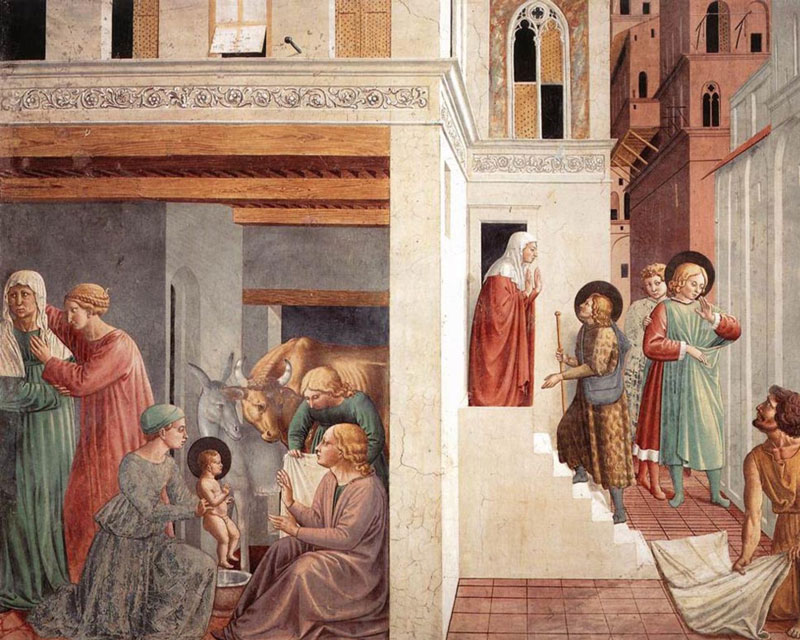
The painting is by Gozzoli.
1181 - 1182
Giovanni di Pietro Bernadone is born and baptized in Assisi, Italy; he is later named Francesco. His father is a wealthy merchant and desires that Francis follow him into this profession.
And out of that love he gave himself completely to God and His people as God had completely given of Himself in His Son Jesus Christ and as God continues to do so in the Eucharist.
This poverello (“little poor man”) gave away all that he had in order to know and to follow the Lord more closely and his life of Gospel joy soon attracted other men to follow him and live as he did- brothers who shared everything and supported each other on their spiritual journey.
St. Francis had a profound impact on the Church and the world, and he did it simply by authentically living the Gospel life as God was calling him to- loving and caring for all of God’s creatures without exception and seeing himself as brother to every person and even everything in the world. Therefore, he had a special love for the poor and those who were on the margins of society and his countless followers since then have worked to do the same in their own way. As St. Francis said as he lay dying, “I have done my part- may Christ teach you to do yours.”
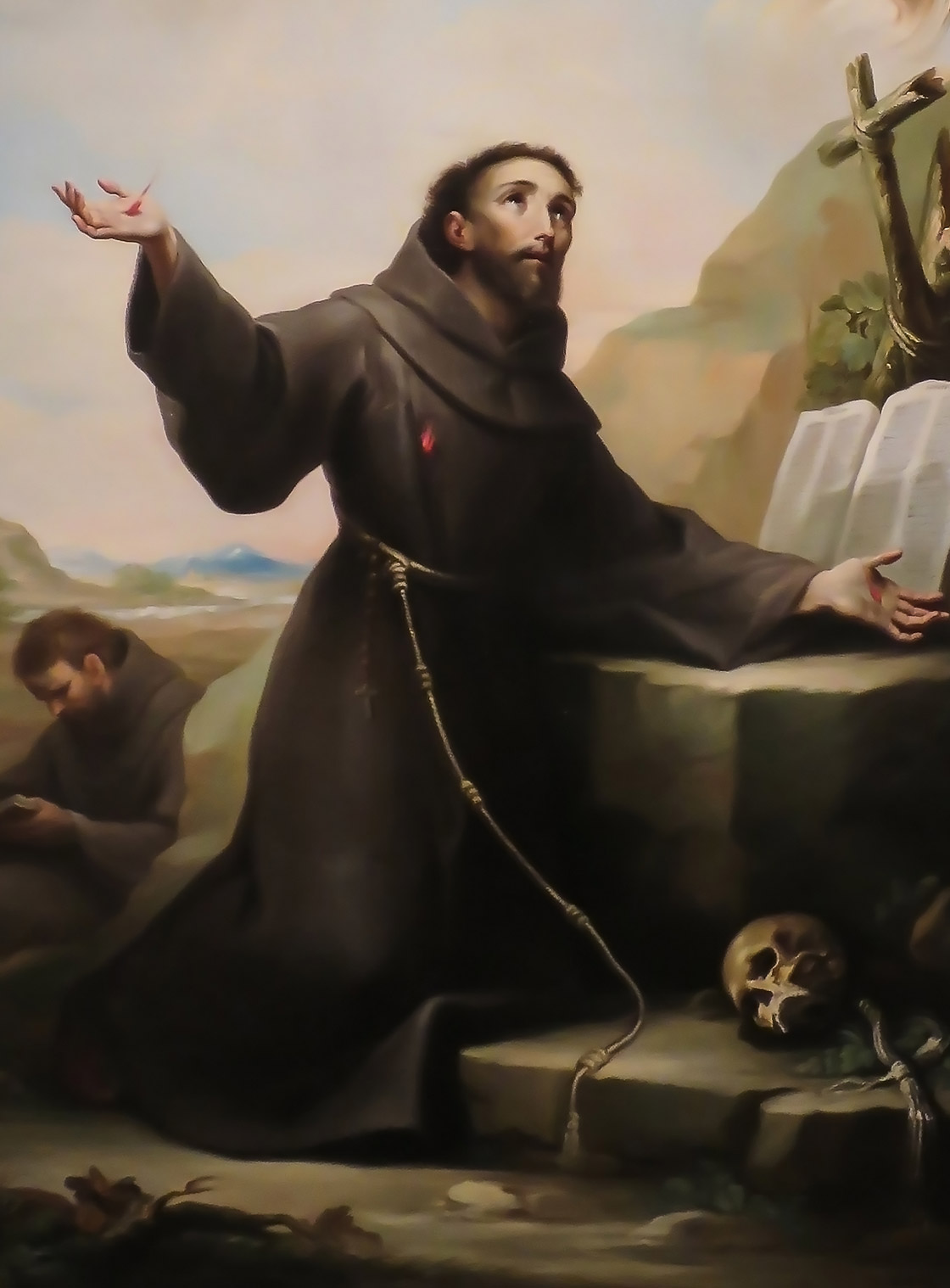

The painting is by Gozzoli.
Giovanni di Pietro Bernadone is born and baptized in Assisi, Italy; he is later named Francesco. His father is a wealthy merchant and desires that Francis follow him into this profession.
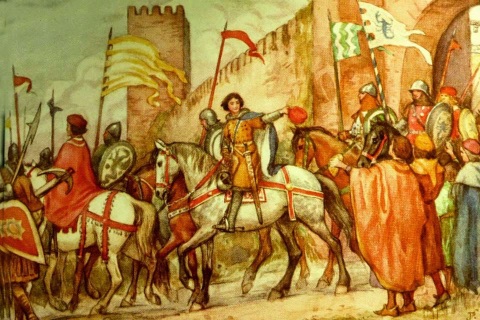
Francis participates in a battle between Assisi and Perugia; he is captured and imprisoned.
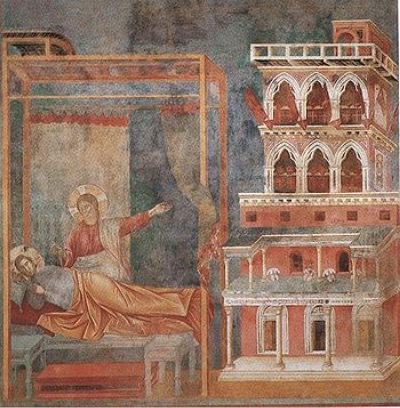
#3 in the Giotto cycle (Dream of the Palace)
Francis endures a long illness and begins to think about his life- the first stirrings of his conversion.
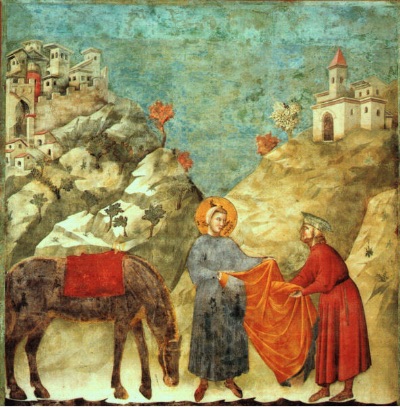
#2 in the Giotto cycle
(St. Francis giving his mantle to a poor man)
Francis’s conversion to a life of faith begins in earnest- he gives away his possessions to the poor and works with the lepers.
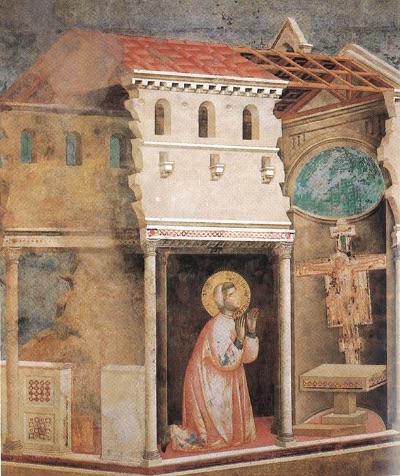
#4 in the Giotto cycle (Miracle of the Crucifix)
In the church of San Damiano, Francis hears the cross say to him “Go, repair my house, which as you see, is falling into ruins.” He then takes than injunction literally and begins to repair churches.
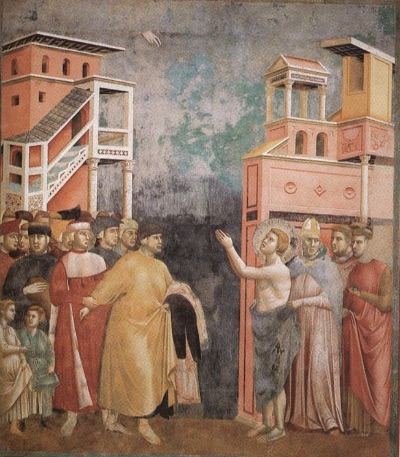
#5 in the Giotto cycle
(Renunciation of Worldly Goods)
Francis renounces his father and his inheritance and pledges his allegiance to the Bishop and thus to the Church.

#7 in the Giotto cycle (Confirmation of the Rule)
Francis begins to preach repentance and the love of God and of all people; many young men are attracted to what he was doing and join him in his mission; Francis writes a Rule for these followers to articulate his way of Gospel life.
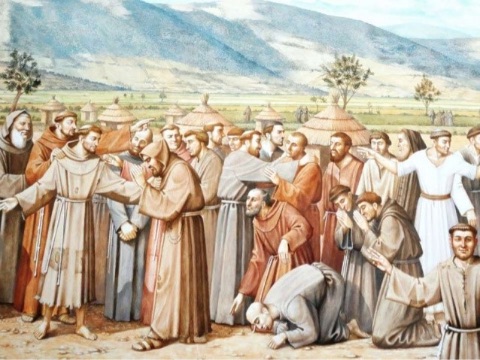
After several years of prayer, preaching around Italy and working with the marginalized of his society, Francis has over many thousand followers all over Europe; 5,000 of these brothers convene to be taught by Francis and discuss how God is calling them to live out their vocation.
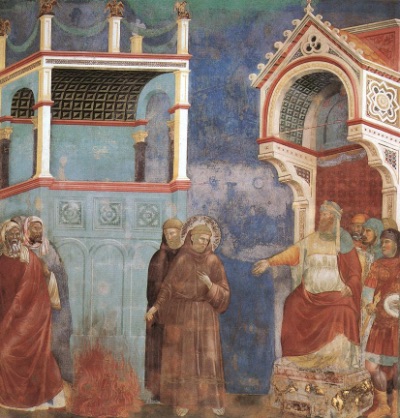
#11 in the Giotto cycle
(St. Francis before the Sultan)
Francis sails to Egypt and wishes to meet the Sultan so that he can share with him the Good News of Christ.
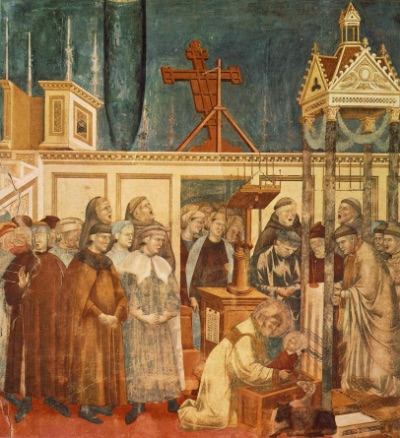
#13 in the Giotto cycle
(Institution of the Crib at Greccio)
Francis recreates the story of the Nativity of Christ at Greccio; miraculously the Christ child appears there.
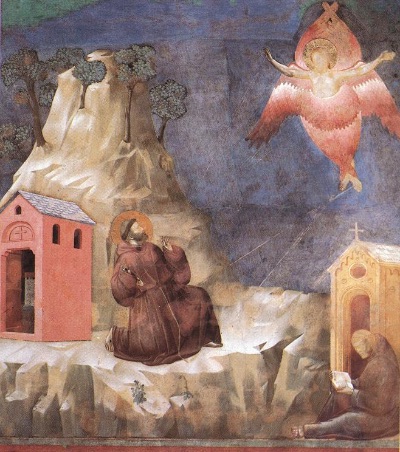
#19 in the Giotto cycle
(Stigmatization of St. Francis)
At LaVerna, Francis receives the stigmata (the wounds of Christ), a profound sign of his conformity to his beloved Christ.
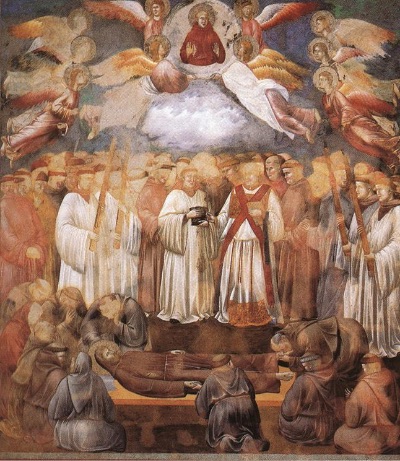
#20 in the Giotto cycle
(Death and Ascension of St. Francis)
Francis dies surrounded by his brothers; he is buried at the Church of St. Giorgio in Assisi and is canonized on July 16, 1228
by Pope Gregory IX.